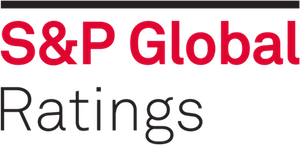 CENTENNIAL (S&P Global Ratings) May 25, 2018–S&P Global Ratings today said that it believes the impacts of the cuts to the 340B Drug Pricing Program on not-for-profit hospitals that rely on 340B drug savings will likely weaken their operating performance at a time of already tightening margins. This could lead to negative rating actions if hospital-specific funding reductions were material and not offset by other management actions. And despite the possibility of a legal challenge to the cuts, additional proposed program reforms at the federal level could further negatively affect these providers’ finances.
CENTENNIAL (S&P Global Ratings) May 25, 2018–S&P Global Ratings today said that it believes the impacts of the cuts to the 340B Drug Pricing Program on not-for-profit hospitals that rely on 340B drug savings will likely weaken their operating performance at a time of already tightening margins. This could lead to negative rating actions if hospital-specific funding reductions were material and not offset by other management actions. And despite the possibility of a legal challenge to the cuts, additional proposed program reforms at the federal level could further negatively affect these providers’ finances.
THE PROGRAM AND THE CUTS
The program is a critical resource for many hospitals that serve the most vulnerable patients. The savings providers receive offset the high costs of medicines, especially in oncology, that are often not well-reimbursed for Medicaid and uninsured patients. Under the program, the federal government or commercial insurance reimburse the discounted medication’s full price, with the organization retaining the difference.
Although the program has been integral to safety-net hospitals, many nonsafety-net providers have also benefited in the past few years, leading to calls for the program’s reform. Effective Jan. 1, 2018, the Centers for Medicare and Medicaid Services (CMS) effectively cut the program by $1.6 billion, or almost 16% of the program’s $10.2 billion budget for fiscal 2017. The CMS reduction moved the reimbursement rate for 340B medications paid under Medicare Part B to average sales price minus 22% from plus 6%, leading to the $1.6 billion cut. This change revises the Outpatient Prospective (OPPS) and Ambulatory Surgical Center (ASC) Payment Systems, so the cuts will only affect organizations that use these systems, including hospitals, ASCs, and community mental health centers. Exempted from this change are rural sole community hospitals, children’s hospitals, and OPPS-exempt cancer hospitals. CMS has said that it will allocate the savings from the cuts into the larger Medicare reimbursement pool through incrementally higher reimbursements. However, all organizations receiving the reimbursement, not just the 340B program providers, would reap the rewards.
Many larger hospitals and systems that use the program will not see direct material impacts because the dollar amounts are relatively small for them. Smaller providers and rural hospitals, however, could see bigger effects. Small hospitals, rural hospitals, and DSH hospitals that use the program depend much more on the margin they receive from 340B medications to sustain their bottom line and overall financial profiles. In these cases, cuts to the program are likely to further stress already-constrained operating performance, adding to financial pressure and possible negative rating actions. Further strain could come from the changes affecting federally qualified health centers. More specifically, if they cannot generate sufficient cash flow due to the cuts, we believe they will serve fewer patients, which in turn would add to the burdens on some hospitals, because patients without options tend to seek treatment from hospital emergency rooms or clinics. Federally qualified health centers include public housing primary care clinics, homeless clinics, HIV clinics, and some cancer centers.
POSSIBLE LEGAL CHALLENGE
Before the cuts, the American Hospital Association, along with the Association of American Medical Colleges, America’s Essential Hospitals, and multiple health systems, sued the federal government to halt the implementation of the cuts. The suit claimed that the cuts would cause immediate harm to the hospitals that rely on the program and that the Department of Health and Human Services (HHS) does not have the authority to impose the cuts. The suit was dismissed in late December 2017, with the judge ruling that there could be no complaint against a change that had not yet happened. As of May 4, 2018, however, a federal appellate court is considering reviving the case, with the judges questioning whether the cuts were implemented properly and are within the HHS’ authority. We expect this case to continue.
FURTHER CALLS FOR REFORM
Beyond the cuts and legal action, federal lawmakers have shown an interest in examining the program. Proposed legislation in the Senate would require participating hospitals to report their 340B drug costs and the related reimbursement received from all third-party payers. The Senate Health Committee has also said that it will be holding hearings on the program in 2018.
In addition, on May 11, 2018, the Trump Administration proposed major drug pricing changes under its “American Patients First Blueprint,” which outlines further 340B program reform. The administration said that hospitals benefiting from the program are not providing meaningful charity care. Although we expect further details on the proposal in the coming weeks, reforms include the requirement that charity care thresholds for hospitals paid under Medicare Part B be at least 1% of patient costs. The proposal also seeks to require safety net hospitals to use their 340B benefits to expand care for vulnerable patients. S&P Global Ratings will continue to monitor the situation.
Only a rating committee may determine a rating action and this report does not constitute a rating action.
S&P Global Ratings, part of S&P Global Inc. (NYSE: SPGI), is the world’s leading provider of independent credit risk research. We publish more than a million credit ratings on debt issued by sovereign, municipal, corporate and financial sector entities. With over 1,400 credit analysts in 26 countries, and more than 150 years’ experience of assessing credit risk, we offer a unique combination of global coverage and local insight. Our research and opinions about relative credit risk provide market participants with information that helps to support the growth of transparent, liquid debt markets worldwide.

